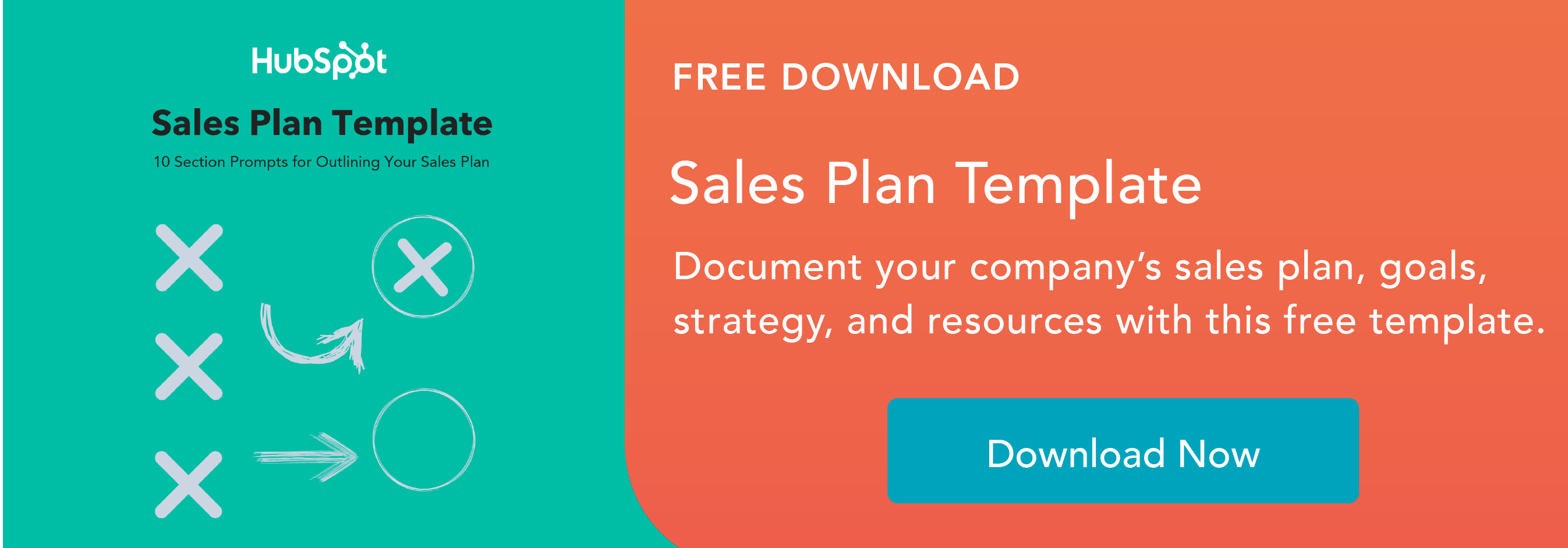If you’re new to sales or just here to keep up to date with the best techniques for selling, I’m going to level with you: the secret of selling anything to anybody is not attempting to sell just anything to just about anybody. And, in my opinion, being a good salesperson isn’t about having a good response to “sell me this pen.” (If your boss has seen the Wolf of Wall Street movie too many times, humor them with these clever responses).
So, what makes a good salesperson? Whether you work in retail, auto sales, or B2B sales, you‘ll stand the best chance of success if you’re familiar with the characteristics of your target buyers and thoroughly qualify each prospect against that matrix. This is called an ideal buyer profile, and it’s like having a secret weapon.
But once you’ve found your ideal buyer, you can’t just sit back and watch your sales figures grow. Instead, you’ll have to follow some expert-approved best practices, which this article goes through in detail. Here’s what you’ll learn:
Can Anyone Learn to Sell?
You bet. It just requires the right mindset, plus the willingness to practice and work on your approach until you get it right.
Author and “world’s greatest salesman” Joe Girard emphasizes in his book How to Sell Anything to Anybody that the people who excel in sales don’t approach it as a one-and-done transactional arrangement. Instead, he says those who “understand how selling can be a continuing process that never ends, then you’re going to make it to the big time.”
Once you see selling as a process rather than a transaction, you’ll set yourself up for success. Keep reading to learn what that looks like.
How to Sell Anything
- Focus on your buyer.
- Do your research ahead of time.
- Get to know your customers first.
- Be helpful.
- Ask thoughtful questions.
- Listen to what prospects say.
- Use psychology.
- Meet them where they’re at.
- Be human.
1. Focus on your buyer.
Do you have a friend or family member who monopolizes every conversation? You might say, “I just bought a new car!” and they’ll say, “Oh, cool. I remember when I bought my last car. It was…..”
I think it’s safe to say they probably aren’t your favorite person to talk to. Add a bragging tone, and they become especially intolerable.
Similarly, buyers don’t like listening to salespeople talk at length about their products or personal life. What you perceive as informative and interesting, prospects perceive as obnoxious and irrelevant.
I’ve learned that the first rule of sales is to make almost every conversation you have with your buyer about them. In most cases, every email you write, voicemail you leave, demo you give, and meeting you attend should focus squarely on the buyer.
I say most cases because there are times when sharing some information can be helpful, as long as you don’t go overboard. Let me give you an example.
If a buyer says something like, “Is that a Midwest accent I hear?” you can respond and share a little bit about yourself. I think this is a great opportunity to establish some common ground with a buyer. If you immediately try to deflect attention to focus on the buyer or product, the buyer might think you are evasive or desperate for a sale.
Beyond that, during your sales interactions, constantly ask yourself, “What’s the relevance to this particular prospect?” and customize each interaction accordingly.

Free Sales Plan Template
Outline your company's sales strategy in one simple, coherent sales plan.
- Target Market
- Prospecting Strategy
- Budget
- Goals
Download Free
All fields are required.

2. Do your research ahead of time.
According to HubSpot’s 2024 Sales Trends Report, 96% of prospects do their own research before speaking with a sales rep. And if potential customers put in effort to learn about your product or service, you can devote some time to learning about them.
I think that in the age of social media, there’s no excuse for calling or emailing a buyer without knowing what they do and what they care about.
But you don’t need to spend hours reading a customer’s 500-page business ebook … unless you work in book publishing. Depending on your sales cycle, pre-call research can take as little as 5 to 10 minutes.
Here’s where I recommend starting your research on prospects:
Social Media Profiles
You can use Facebook, Instagram, or X (formerly Twitter), but I think you’ll get the most valuable information from a prospect’s LinkedIn. You’ll be able to see their background, skills, and experience, and their posts might yield some insights on how to approach a sale.
Pro tip: I recommend you go a step further and review the LinkedIn profile of the company your prospect works at. You can discover recent information, like industry awards they’ve won, and get a general idea about the company’s goals and needs.
Press Releases
This may not seem like an obvious choice, but I think reading press releases is a great way to get up-to-date information on your prospect’s company. By understanding their public statements and messaging, you can gain insights into their brand image, market positioning, and strategic direction.
But what if your prospect is a small business owner with a handful of press releases or none at all? Research the press releases of their competitors. This way, you can still discover industry trends, market challenges, or regulatory changes they might be dealing with.
Blogs
When I was an editor at HubSpot’s Sales Blog, I had to constantly keep up to date with sales trends to ensure everything we published provided exceptional value to readers like you. To do this, I read the blogs and opinion pieces of thought leaders wherever I could find them.
Your prospect might publish articles on their company blog, news websites, or even self-publication sites like Medium.
Pro tip: When reading through a potential customer’s blog, take notes on the major talking points and keep these notes at hand during sales calls. If you can go deeper than simply saying, “I like your blog — it’s well-written,” you’ll show that you’ve done your research and value your prospect’s input.
Company Financial Statements
If you can access them, your buyer’s company financial statements can reveal information regarding their financial stability and cash flow. This can help you assess the prospect’s ability to invest in your product or service.
While I don’t consider myself a financial whiz, I often use financial statements to check a company’s spending. If it has invested heavily in research and development, I take that as a sign that it focuses on innovation and improvement.
Pro tip: Unless you’re in the finance industry, only use financial statements as background information. I don’t recommend directly referencing them to clients.
This one is fairly obvious: Do a Google search of the prospect’s name, their company, and any related news or updates. When doing your research, try to find information about their needs, pain points, goals, and preferences. That way you can tailor your messaging around issues that are important to them.
Pro tip: If you’re using HubSpot’s Customer Profile Software, you can siphon all of this known information about a prospect directly into your inbox.
3. Get to know your customers first.
I’ve always thought building rapport was vital for sales, and this year’s Sales Trends Report confirmed that. Up to 82% of sales professionals say that relationship building is the most important part of selling.
Unsurprisingly, the same percentage (82%) of sales pros said that relationship building is the most enjoyable part of their job.
To further support the value of rapport for salespeople, I’ve tried to pinpoint the ways in which it drives sales. Here’s what I found:
- It establishes a foundation of trust and likability.
- It facilitates effective communication.
- It helps you gain insight into buyers’ needs, motivations, and decision-making processes.
- It can differentiate you from competitors.
- It contributes to an overall positive customer experience.
When I enter a retail store, I’m usually put off if the store assistant asks direct questions from the get-go. For example, if I’m just testing out a new cell phone in a store, I’m not ready to answer the question, “Would you like to buy that phone?”
Instead, salespeople should engage in a way that helps customers on their journey. You could start with something like, “This model has great battery life. Is this an important consideration for you?”
I’ve just described a face-to-face retail scenario, but this approach can be applied to B2B outreach. If you’re contacting a prospect you haven’t spoken with before, it’s important to lean heavily on the research element I touched on in step two.
4. Be helpful.
Position yourself as an advisor who wants to help rather than a salesperson thirsty to sell. In short: Always Be Helping. I think social selling expert Jill Rowley put it well when she said, “Think ‘jab, jab, jab, right hook’ as ‘give, give, give, ask.’”
How can you put this advice into practice?
Instead of jumping into a sales pitch right off the bat, which can scare off prospects, offer help in a way you think would be the most valuable.
For example, you can draw on your expertise to speak about industry-wide trends the buyer might not know about. You can also share content that a buyer might find helpful or even provide free tools that make their job easier.
As you might have already noticed, HubSpot provides many helpful tools free of charge, like customer relationship management (CRM) software. This is one of the things I’ve always admired about the brand — it fulfills many customer needs without asking them to pay a cent.
It’s worth mentioning that free resources — as long as they’re helpful and not overly restrictive — are a great marketing tool.
Pro tip: Save templates of common questions you receive from buyers so you can quickly follow up with a relevant message. A free tool like HubSpot’s Email Template Builder can help you spend more time selling and less time drafting repetitive emails.
5. Ask thoughtful questions.
I’ve already covered the importance of focusing on your customers (step one) and getting to know them (step three). Asking thoughtful questions helps with both of these steps.
The truth is, no matter how thoroughly you‘ve researched your prospect, there will be gaps in your knowledge, and you won’t be able to help the buyer solve their issue if you don‘t fully understand it. For this reason, it’s critical to ask thoughtful questions during your conversations — and a lot of them.
Here are some examples that sales trainers Rick Roberge and Sean McPheat advocate:
- “How did this happen?”
- “What are the most important features for you?”
- “Has it always been this way?”
- “How should this product make you feel?”
- "How is the issue impacting your organization?
- “What do your customers think? ”
- “What are you currently doing to address the problem?”
- “In a perfect world, what would you like to see happen with this?”
- “Can you give me an example?”
Pro tip: When I’m interviewing subject matter experts, I always have a list of questions prepared as a jumping-off point. However, I don’t rigidly stick to them if the conversation takes a different turn.
I find that I can build a stronger connection with people when I ask questions based on the conversation I’m having instead of asking entirely pre-planned questions. People like talking about themselves and their situations, so if you show genuine interest and curiosity, it will help them warm up to you.
6. Listen to what prospects say.
After you’ve asked a thoughtful question, listen. Really hear what the buyer is saying, and don‘t just wait for your turn to speak. Then, after they’ve finished their thought, communicate their message back to them, ask them to verify if you understood them correctly, and pose a question providing further clarification.
Congratulations — you just became an active listener!
When I got in touch with Clare Jones, Global Outreach Manager at Custom Neon, she told me about a time a customer (small boutique owner) was interested in the company’s product (neon signs) but was somewhat hesitant due to budget constraints.
When Jones actively listened to the customer’s concerns and identified her desire to attract more foot traffic, a solution presented itself: “I was able to pitch the sign as an investment rather than an expense and find a customized solution that was more in line with her budget. This not only resulted in a sale but also a repeat purchaser and advocate.”

Free Sales Plan Template
Outline your company's sales strategy in one simple, coherent sales plan.
- Target Market
- Prospecting Strategy
- Budget
- Goals
Download Free
All fields are required.

7. Use psychology.
Our brains are wired to respond to certain situations in specific ways. I’m not recommending any devious tricks, but you should be aware of certain quirks of the human mind that are relevant to salespeople, such as:
The Anchoring Effect
According to this effect, the information we receive first acts as an anchor against which we evaluate all further data.
For example, if I’m shopping for orange juice at the grocery store and the first one I see is a cold-pressed, organic juice priced at $15, I’ll never buy it. But if I then see a similar product at half the price? The cheaper option will be very tempting.
Does it matter to my brain that I’d usually only spend a maximum of $5 on my morning juice? …Apparently not.
The Decoy Effect
When a person is having difficulty making a choice between two possibilities (e.g., products or services), a third option can sometimes help them make a decision.
With this approach, the decoy is strategically designed to make one of the other options more appealing. This is usually done by making the decoy similar to the desired option but slightly inferior in terms of features, benefits, or price.
Recently, I was looking online for a TV streaming subscription. The basic plan was $7.99, the standard plan was $13.99, and the premium plan was $14.99. After learning about the decoy effect, I realized that the standard plan was a decoy here: it makes the premium plan seem like a great deal, even though it’s almost twice the price of the basic plan.
Loss Aversion
According to the loss aversion effect, humans react more strongly to the possibility of losing something we currently have than the possibility of gaining something we don’t.
Let me give you an example of this: I got a free trial version of antivirus software. When the trial was almost over, the company told me I was about to lose access to the protection I have and leave my devices exposed to hacking. To me, this was more convincing than the prospect of gaining additional antivirus protection.
I’m not recommending you take an alarmist approach like an antivirus company I won’t name here. That said, you can emphasize what a potential buyer might miss out on if they don’t buy your product or service. This appeals to their innate aversion to loss and can motivate them to make a decision sooner.
Peak-End Rule
According to this rule, people can recall the end and the high point of an experience more vividly than any other part of it. For example, a week after watching a movie, I can usually remember the main action sequence and ending. But ask me what happened at the start (prepare for a blank stare).
So, how does this help salespeople? Well, you can work the peak-end effect into your sales calls and presentations. You can create memorable peak moments by offering exceptional customer service, providing personalized recommendations, or delivering a memorable demonstration.
You can also leave an impression by recapping your value proposition, emphasizing key benefits, or offering an exclusive deal or bonus to create a memorable end to your presentation.
Curse of Knowledge
The curse of knowledge is when someone who knows a lot about a given subject is unable to relate to someone who is not as familiar.
If you’re like me, “How did you not know that?” is a fairly consistent question in your personal and professional life. Somehow, it’s infuriating to both the person asking and answering it.
In the context of sales, if you are “too familiar” with your product or service, you might struggle to explain it in a way that a prospect can understand.
Being aware of the curse of knowledge is the first step to overcoming it. When speaking to sales prospects, you’ll need to put yourself in their shoes and explain things simply.
Pro tip: Use real-life examples and ask prospects open-ended questions to gauge their level of understanding and address any knowledge gaps. A prospect with a high knowledge level won’t appreciate oversimplification, but one with a low knowledge level might need some background information to appreciate your pitch.
Confirmation Bias
As any armchair researcher probably won’t testify, we are more likely to accept information that aligns with our beliefs than contradictory evidence — no matter how compelling.
While you might not be able to win everyone over, you can address confirmation bias by using social proof, highlighting positive reviews, providing data-driven evidence, and aligning with your prospect’s values and goals.
So, what do you do with these examples of how psychology can be applied in your sales conversations? Approach them ethically, with the genuine intention of understanding and serving the prospect’s needs while building trust and rapport.
8. Meet customers where they’re at.
Personally, I love seeing a salesperson bring their unique personality to their job. But it’s worth mentioning that not every prospect will respond well to certain personalities and behaviors. For example, some customers love the Turkish ice cream trick, while others don’t like being the butt of the joke.
That’s why you should pay attention to your prospect’s personality and tailor your approach accordingly. To help you out, I’ve broken down the four main personality types and their preferences.
Driver
Drivers are interested in results and the bottom line. They are often action-oriented and do not want to engage in small talk.
When I’m making an in-person presentation, I can easily spot the driver personalities in the room: they look disinterested when I’m first explaining a product or method, and their eyes light up when I tell them what exactly can be achieved.
When communicating with drivers, I think it’s best to be direct with them and get to the point. So, focus your messaging on their goals and how your product or service can help them there.
Amiable
Amiable types are interested in creative ideas and big-picture visions. They tend to be warm, friendly, and approachable.
When communicating with amiable people, listen attentively and speak calmly and kindly. They value cooperation and strive to find common ground in their interactions. Due to their desire for harmony, people with amiable personalities tend to avoid conflict. For this reason, it’s best not to use confrontational language with them.
Expressive
People with expressive personalities are interested in people and how ideas affect others. They are typically outgoing, enthusiastic, and sociable in their communication.
Expressive people tend to share their emotions and personal experiences openly. They may relate to others by revealing their own feelings and sharing anecdotes from their own lives.
Pro tip: You might not have to ask an expressive person many thoughtful questions to get them to open up. Instead, dial in your active listening skills to find out what solutions they need.
Analytical
People with analytical personalities are interested in facts, so bring them figures and data. They tend to be logical, detail-oriented, and systematic in their communication.
Analytical people value concrete information and prefer evidence-based discussions. They tend to be a little skeptical, often anticipating potential challenges and trying to address them proactively. They are also inclined to ask many questions or for clarification to ensure they have a complete picture and can make informed decisions.
Pro tip: Don’t give an analytical personality any suspect stats to try and win a sale — they’ll see right through you. Instead, leverage proper research to show that you know your onions.
9. Be human.
When I get an outreach email, I read at least the first few lines. But if I feel that the email isn’t tailored toward me in any way, I’m less likely to read much further. Remember that leads are people, and they want to be treated as such.
So, how can you ensure you treat every lead as more than just a cash machine? It’s simple: During every part of the sales process, use yourself as a litmus test — would I like to receive this email? Would I appreciate this voicemail? If the answer is no, you should reconsider your sales approach.
Another key point is transparency. Be honest and real when talking to your buyer about your product or service. For example, don’t make exaggerations or promises you can’t deliver on.
By taking a more genuine approach, you can create a more meaningful experience for your buyer, increasing your chances of new sales and referrals.
How to Sell Anything Online
- Research different industries.
- Choose your product or service.
- Identify the target customer.
- Set a price.
- Choose a selling platform.
- Generate leads.
- Offer self-service resources.
- Use AI to save time and boost insights.
- Make your pitch.
- Close the deal.
- Deliver the product or service.
- Ask for referrals.
1. Research different industries.
Before you decide what to sell, gather information about the industries that appeal to you, such as technology or ecommerce.
You can do extensive independent research to understand the market for that industry, the key players you'll be competing against, and the potential your business will have over time. Use credible sources like The Pew Research Center and the Small Business Administration to get started.
2. Choose your product or service.
Can’t decide whether you want to sell a product or service? Think about how the sales techniques differ between them. Products can typically be sold without face-to-face interaction, whereas services normally require a conversation with a representative or the service provider who’ll be doing the work.
For products, you’ll need to consider shipping costs, ecommerce websites, and supply chain, and for services, you'll focus on scheduling, project management, and quality control.
When deciding which ecommerce platform to choose, you will need to find the right platform for the type of products you want to sell. For example, selling digital products typically requires a specialist platform. Whereas, physical products can be sold via most general-purpose ecommerce platforms.
3. Identify the target customer.
After you’ve decided on your industry and sales offering, you should try to identify your target market. If you’ve taken the heading of this article literally, I’ve got some news for you: instead of literally trying to sell anything to anybody, you need to find a group that’ll benefit from your product or service.
Identifying your target customer is a welcome challenge for most sales reps because it allows them to find pain points quickly and prepare a pitch that meets their needs. The great thing about selling online is that you can iterate your pitch several times as you refine who your target customer is.
If you notice that one prospect went with a competitor while the other chose your product, you can narrow down the reasons why that happened.

Free Sales Plan Template
Outline your company's sales strategy in one simple, coherent sales plan.
- Target Market
- Prospecting Strategy
- Budget
- Goals
Download Free
All fields are required.

4. Set a price.
Like most buyers, I like to feel that I’ve gotten a good deal from a purchase. For this reason, I think a good salesperson should leave some wiggle room around selling prices.
However, that doesn’t mean you should forego standard pricing. You’ll need to make sure that you cover the cost of everything that goes into your product or service, both direct (e.g., manufacturing costs) and indirect (e.g., marketing costs).
When you set a price, you protect your business and prevent overcharging your customers. Remember that if you overcharge people, they’ll probably discover they could have bought your product for less money elsewhere, which means you’ll lose a customer and could experience negative word-of-mouth.
5. Choose a selling platform.
If you want to master the art of selling before launching your own website, have at it. Many B2C companies operate exclusively through platforms like Amazon, Shopify, or Etsy.
For B2B sales, I think you’d be better off with your own website from the get-go: it’ll look more professional than selling on a third-party platform. But a business website doesn’t need to be expensive — there are many cheap (even free) and simple ways to build a website, such as HubSpot’s free drag-and-drop website builder.

6. Generate leads.
Researching the industry, choosing a target customer, setting prices, and building a website are only the beginning of learning how to sell anything online. You now need to thread the needle between all four of these steps, and that starts with lead generation.
When I reached out to Amir Kahani (managing partner at Keyideas AI) for sales tips, he shared his approach to lead generation and nurturing.
He says, “For me, lead generation involves a mix of inbound and outbound strategies, including content marketing and networking events. Once leads are in the funnel, nurturing them with regular, valuable interactions is key. Personalized emails, insightful webinars, and timely follow-ups keep the relationship warm and steadily move leads toward a sale.”
Pro tip: HubSpot’s Lead Capture Software has many features that help you drive sales, like lead scoring and prioritization. And I have some good news if you’re a cash-conscious startup owner: you can get started for free!
7. Offer self-service resources.
Providing customers with self-service resources (e.g., online help and knowledge bases) is crucial, and more and more sales pros are seeing that.
Of the sales professionals surveyed by HubSpot in the recent Sales Trend Report, 64% said they provided self-service resources to customers to guide their purchase decisions. What’s more, 85% of participants said it was an effective strategy.
As a salesperson, you might also be shocked to hear that 71% of prospects prefer doing their own research instead of speaking to a human. It doesn’t surprise me — when I’m researching a product, I go to great lengths to avoid bothering sales or support staff.
Pro tip: Use SEO best practices when writing self-service content like blogs, how-to articles, and customer stories. As the editor and manager of HubSpot blogs, I placed a high value on SEO for inbound marketing and sales, and I’ve seen the results to back it up.
8. Use AI to save time and boost insights.
At this point, AI has wielded its influence on almost every corner of the internet, and online sales are no exception. For instance, Jones told me that AI has transformed Custom Neon’s sales approach by helping them “analyze customer data, predict buying patterns, and personalize outreach.”
Her comments on AI are echoed in HubSpot’s Sales Trends Report, with 81% and 78% of respondents saying that AI can help them save time on manual tasks and increase efficiency. They even went on to say that AI saves them two hours a day on administrative tasks. That’s a huge chunk of time, given that sales pros only spend about two hours a day actually selling.
9. Make your pitch.
It might be tempting to scrap your sales training and just sell on the fly, but resist the temptation. When I’m at the receiving end of a sales pitch, I want a well-crafted, thoughtful speech that demonstrates a product or service’s worth. However, a pitch shouldn’t sound like you’re just sticking to a script. So, leave plenty of room to work a client’s needs and pain points into your pitch.
Pro tip: I don’t recommend a long sales pitch that covers everything but leaves your prospect bored. Keep your pitch short and to the point, leaving plenty of time for establishing common ground and answering questions.
10. Close the deal.
Congrats — you‘ve made it through the pitch! Closing the deal is the next step — if you’re new to the field, it might come as a surprise that asking for a prospect’s business is a required part of the sales process.
This could be as simple as walking the customer over to the cash register to complete the sale or as nuanced as asking for several signatures on a lengthy contract. Regardless, it’s imperative that you close the deal formally.
11. Deliver the product or service.
Depending on the type of deal you’ve just closed, the delivery process could be a software installation, a brick-and-mortar sale, or a home delivery after an online purchase.
If your product is complex, you might need to provide your customers with support so that they can set it up and use it easily. For example, I recommend giving step-by-step instructions through a customer self-service portal and offering personalized support to customers needing additional assistance.
12. Ask for referrals.
When I ask a colleague, friend, or family member to recommend certain service professionals, like a hairdresser or an electrician, I take their advice on board without hesitation — to me, a trusted referral is a stronger draw than hundreds of five-star reviews I’ve seen online.
Think of it this way: A referral is the ultimate compliment a customer can give you. It means they loved their buying experience and purchase so much they’d want other people to experience it for themselves.
Rafi Friedman, president of Coastal Luxury Outdoors, a company that specializes in building, cleaning, and repairing pools for residential and commercial use, told me that referrals are a major source of new business: “For lead generation, we do a lot with SEO, but we have some of our best success with much more traditional methods; we’ll canvas new neighborhoods looking for that first customer who will inspire all their neighbors, and we get a lot of good business from referrals.”
Improving Your Sales Record
I think that being a good salesperson isn’t about convincing a customer that they really need whatever you’re selling. Instead, it’s all about targeting the right customer who can benefit from your offerings and then building relationships with them.
Once you’ve established rapport through asking thoughtful questions and actively listening to the prospect’s input, you’ll be in a great position to deliver a winning sales pitch and get some highly valued referrals.
This post was originally published in November 2023 and has been updated for comprehensiveness.
Sales Communication

![How to sell anything to anybody [new data and expert tips].](https://53.fs1.hubspotusercontent-na1.net/hubfs/53/howtosell.webp)

-4.webp?width=650&height=309&name=hubspot%20(1)-4.webp)


![Active Listening Techniques To Use On Your Next Sales Call [+ Examples]](https://53.fs1.hubspotusercontent-na1.net/hubfs/53/active-listening-1-20250218-4164086.webp)
![How to Reply to a Sales Rejection Email From a Client [+ Templates]](https://53.fs1.hubspotusercontent-na1.net/hubfs/53/timing-objection-responses-1.jpg)



%20(1).png)


